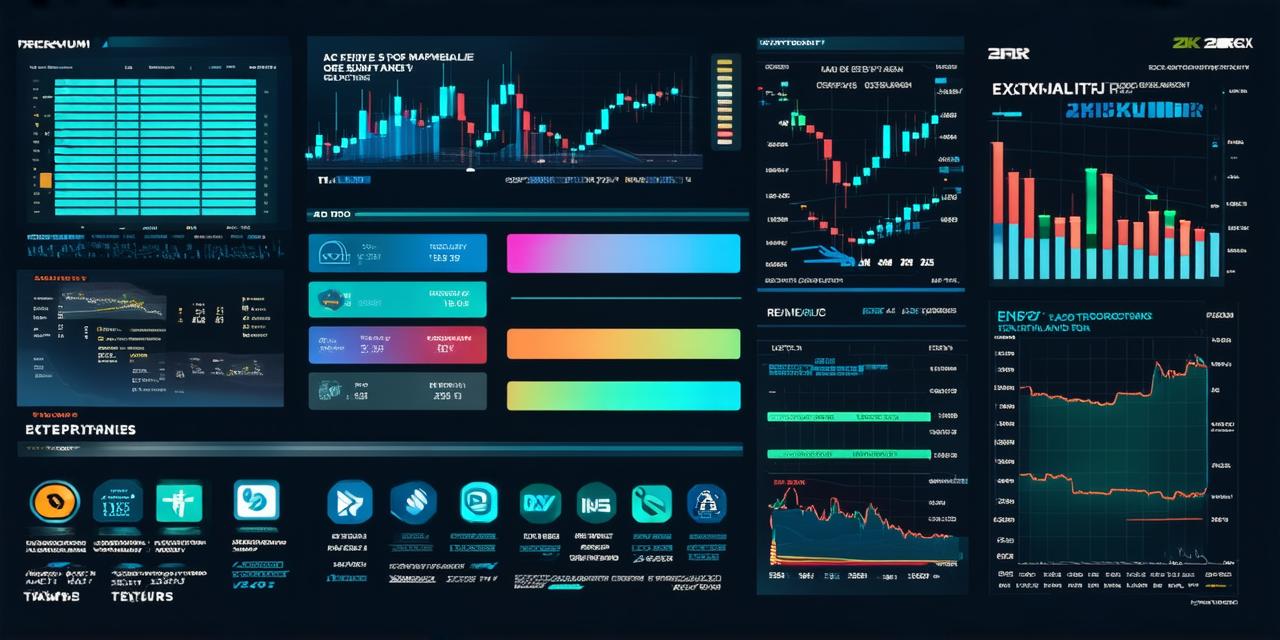In cryptocurrency trading, leverage is a powerful tool that allows traders to magnify their profits and losses. But what does leverage mean exactly? In this article, we’ll explore the concept of leverage in cryptocurrency trading and how it can be used to improve your profitability and risk management.
Understanding Leverage in Trading
Leverage is a financial tool that allows traders to borrow money or assets to invest in a security. The goal of leverage is to amplify the potential returns on an investment, while also increasing the potential for loss. In other words, leverage can be thought of as a double-edged sword – it can either help you make more profits or cause significant losses if used improperly.
In cryptocurrency trading, leverage is often used through margin accounts, which allow traders to borrow funds from their broker to buy and sell cryptocurrencies at a higher price than the current market value. For example, if a trader uses a margin account with 10x leverage to buy Bitcoin at $5,000, they would only need to pay $500 in cash to cover the initial margin requirements, but they could sell Bitcoin for much higher prices, potentially making a significant profit.
However, it’s important to note that leveraging your trades also increases your risk. If the price of the cryptocurrency you bought with leverage falls below the market value, you will owe more money to your broker than you initially deposited, potentially facing a margin call or even losing all of your funds.
When to Use Leverage in Cryptocurrency Trading
There are several scenarios where leveraging your trades can be beneficial in cryptocurrency trading:
- High Volatility: Cryptocurrencies like Bitcoin and Ethereum have historically been highly volatile, meaning their prices can fluctuate wildly in short periods of time. If you’re able to accurately predict the direction of price movements in these markets, leveraging your trades can amplify your potential profits, allowing you to make more money than you would if you were trading without leverage.
- Short-Term Trading: Leverage is particularly useful for short-term traders who are looking to buy and sell cryptocurrencies quickly. By using a margin account, short-term traders can buy and sell at higher prices than the current market value, potentially making a profit in as little as a few days or even hours.
- Speculative Trading: Leverage is also often used by speculative traders who are looking to make a quick profit on a price movement that they believe will be short-lived. However, this type of trading carries significant risk and should only be attempted by experienced traders with a good understanding of market conditions.
How to Use Leverage Safely in Cryptocurrency Trading
While leveraging your trades can be profitable, it’s important to use it safely to avoid significant losses. Here are some tips for using leverage safely in cryptocurrency trading:
- Use a Margin Account Responsibly: When using a margin account, it’s important to only borrow what you can afford to lose. Make sure you understand the risks associated with leveraging your trades and have a solid risk management plan in place.
- Be Aware of Market Conditions: Before making any trades with leverage, make sure you have a good understanding of market conditions. This includes knowing the current price and volume of the cryptocurrency you’re trading, as well as any news or events that could impact its value.
- Use Stop-Loss Orders: A stop-loss order is an automatic sell order that is triggered when a security reaches a predetermined price. By using stop-loss orders, you can limit your losses and protect yourself from significant losses if the market moves against you.
- Diversify Your Portfolio: Leveraging your trades can be risky, so it’s important to diversify your portfolio to reduce your overall exposure to any one asset. This includes investing in a variety of cryptocurrencies and other assets, as well as using different trading strategies.
Examples of Leveraging Trades in Cryptocurrency Trading
Let’s take a look at some real-life examples of leveraging trades in cryptocurrency trading:
Example 1: A trader is able to accurately predict that the price of Bitcoin will rise above $6,000. They use a margin account with 2x leverage to buy Bitcoin at $6,000 and sell it for $7,000, making a profit of $1,000.
Example 2: A speculative trader is able to accurately predict that the price of Ethereum will rise above $3,500 in the next few hours. They use a margin account with 5x leverage to buy Ethereum at $3,450 and sell it for $3,950, making a profit of $450. However, if Ethereum’s price falls below $3,450, they will owe more money to their broker than they initially deposited, potentially facing a margin call.
FAQs about Leveraging Trades in Cryptocurrency Trading
Here are some frequently asked questions about leveraging trades in cryptocurrency trading:
- Q: How much leverage should I use when trading cryptocurrencies?
- Q: What happens if I lose all my funds when leveraging my trades?
- Q: Can I use leverage in long-term trades?

A: The amount of leverage you should use when trading cryptocurrencies depends on your risk tolerance, the volatility of the market, and your overall investment goals. As a general rule, it’s best to start with lower levels of leverage (e.g. 2x) and gradually increase it as you become more experienced and confident in your trades.
A: If you lose all of your funds when leveraging your trades, you will owe more money to your broker than you initially deposited. This can result in a margin call, where the broker requires you to deposit additional funds to cover your outstanding debt. If you are unable to meet the margin requirements, the broker may close out your positions or sell them on your behalf to recover their losses.
A: While leveraging your trades can be beneficial for short-term traders, it’s not recommended for long-term investors. This is because the long-term volatility of cryptocurrencies is generally higher than other assets, making it more difficult to accurately predict price movements and manage risk.
Conclusion
In conclusion, leverage can be a powerful tool in cryptocurrency trading, but it’s important to use it safely and responsibly. By understanding the risks associated with leveraging your trades and having a solid risk management plan in place
